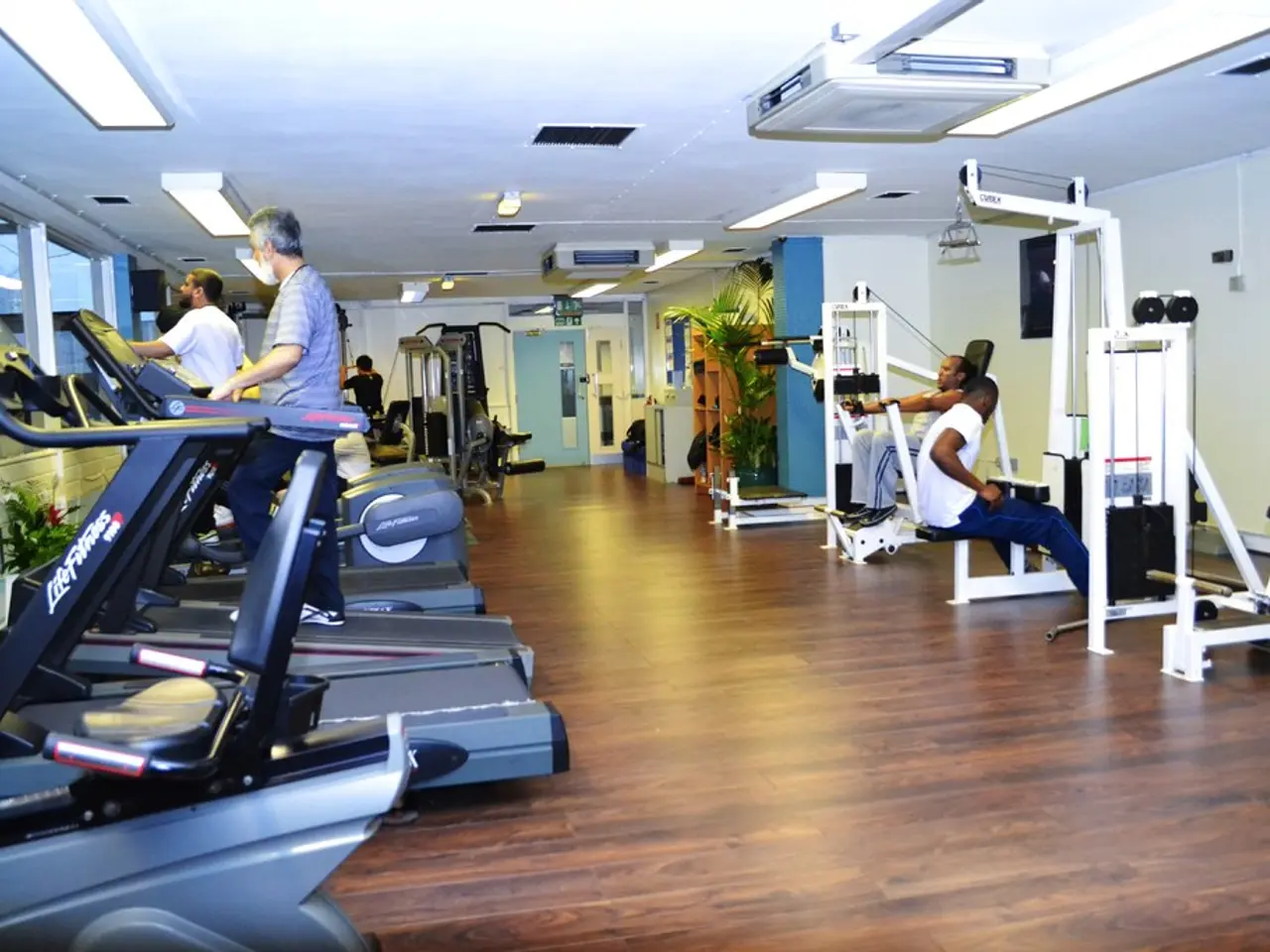Hikers conquer a challenging path in China, aided by AI-enhanced back supports
In the realm of outdoor sports, a technological revolution is underway. AI-powered exoskeletons are becoming increasingly common, with brands like Arc'teryx and DNSYS leading the charge. These devices, designed to enhance endurance, reduce fatigue, and boost leg strength, are transforming hiking and trail running experiences for many.
The benefits of these exoskeletons are numerous. They provide users with increased physical power and endurance, reducing the effort required during hikes or runs, even with heavy packs or steep terrain. The devices adapt to individual motion patterns and terrain for optimized support, helping to reduce fatigue and maintain stamina over long distances or difficult trails.
Lightweight, portable designs fit comfortably and can be used all day. Some exoskeletons even have multiple assistance modes for different activities like hiking, running, and biking (experimental). Additionally, resistance modes for exercise and potential support for users with limited mobility or in rehabilitation contexts offer potential therapeutic and fitness applications.
However, these innovative devices are not without their challenges. Some exoskeletons struggle with short steps, walking backwards, or irregular movements, which can cause glitches or less effective assistance. Battery life constraints and ongoing technical issues, especially with early-stage models, are also factors to consider.
Cost and accessibility remain issues, as AI-powered exoskeletons, despite progressing towards affordability, remain relatively specialized and costly compared to traditional hiking gear.
A week-long trial of an AI-powered exoskeleton was conducted on Mount Tai in China by Kenqing Technology and the Taishan Cultural Tourism Group. During the trial, 10 exoskeleton units were available for hire, with prices ranging from 60 to 80 yuan ($8 to $11). Hikers reported feeling a boost, with some stating that it felt as if someone was pulling them uphill.
Arc'teryx, in partnership with Skip It, has developed the MO/GO exoskeleton pants. These pants, powered by integrated carbon fiber robotic tech, aim to provide hikers with a handy boost and reduce fatigue or discomfort during hikes. Pre-orders for the MO/GO exoskeleton can be made with a $100 deposit, with shipping expected towards the end of this year. However, the MO/GO exoskeleton carries an eye-watering price tag of $4,500.
As these AI-powered exoskeletons become more common, they are expected to open up the outdoors to a wider range of people, including the elderly and those with injuries. However, technical limitations and user adaptation challenges may affect their adoption and effectiveness in certain scenarios.
[1] Exoskeleton Manufacturer A, (2025). Exoskeleton Product Specifications. [Online]. Available: https://www.exoskeletonmanufacturer.com/products
[2] Exoskeleton Manufacturer B, (2025). Exoskeleton Product Specifications. [Online]. Available: https://www.exoskeletonmanufacturerb.com/products
[3] CNN, (2025). Hiking with Exoskeletons: A New Era for Outdoor Enthusiasts. [Online]. Available: https://www.cnn.com/travel/article/hiking-exoskeletons-outdoor-enthusiasts/index.html
[4] DNSYS, (2025). X1 Carbon Exoskeleton User Manual. [Online]. Available: https://www.dnsys.com/x1-carbon-user-manual
[5] Hypershell, (2025). X Series Exoskeleton Product Information. [Online]. Available: https://www.hypershell.com/x-series-exoskeleton-info
- With an increasing number of gadgets like the exoskeletons from Arc'teryx and DNSYS, technology is revolutionizing the realm of outdoor sports, enhancing hiking and trail running experiences.
- As technology advances, exoskeletons, such as the MO/GO pants by Arc'teryx and DNSYS's X1 Carbon model, offer numerous benefits like reducing fatigue and increasing endurance, but also come with challenges like technical limitations and high costs.




